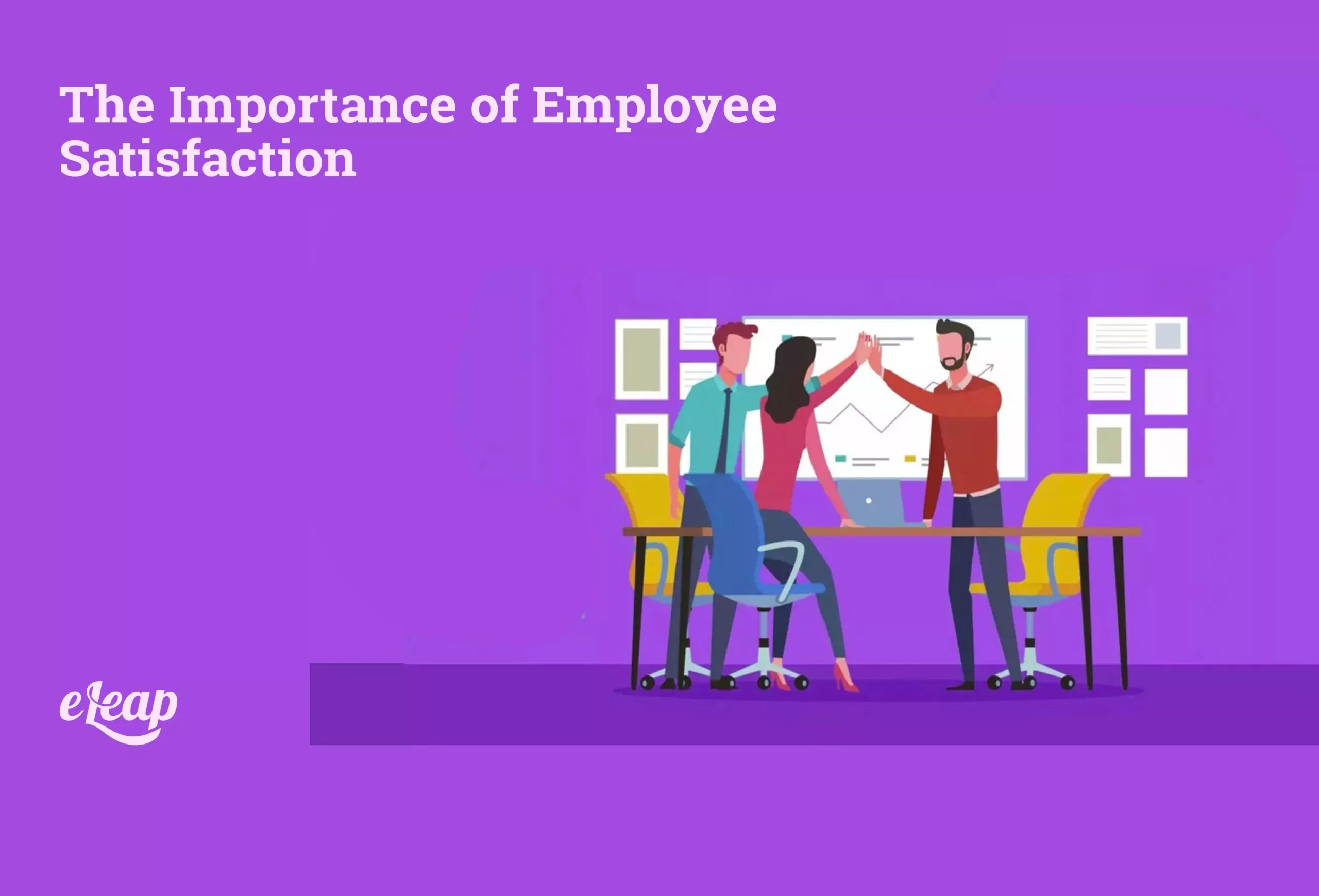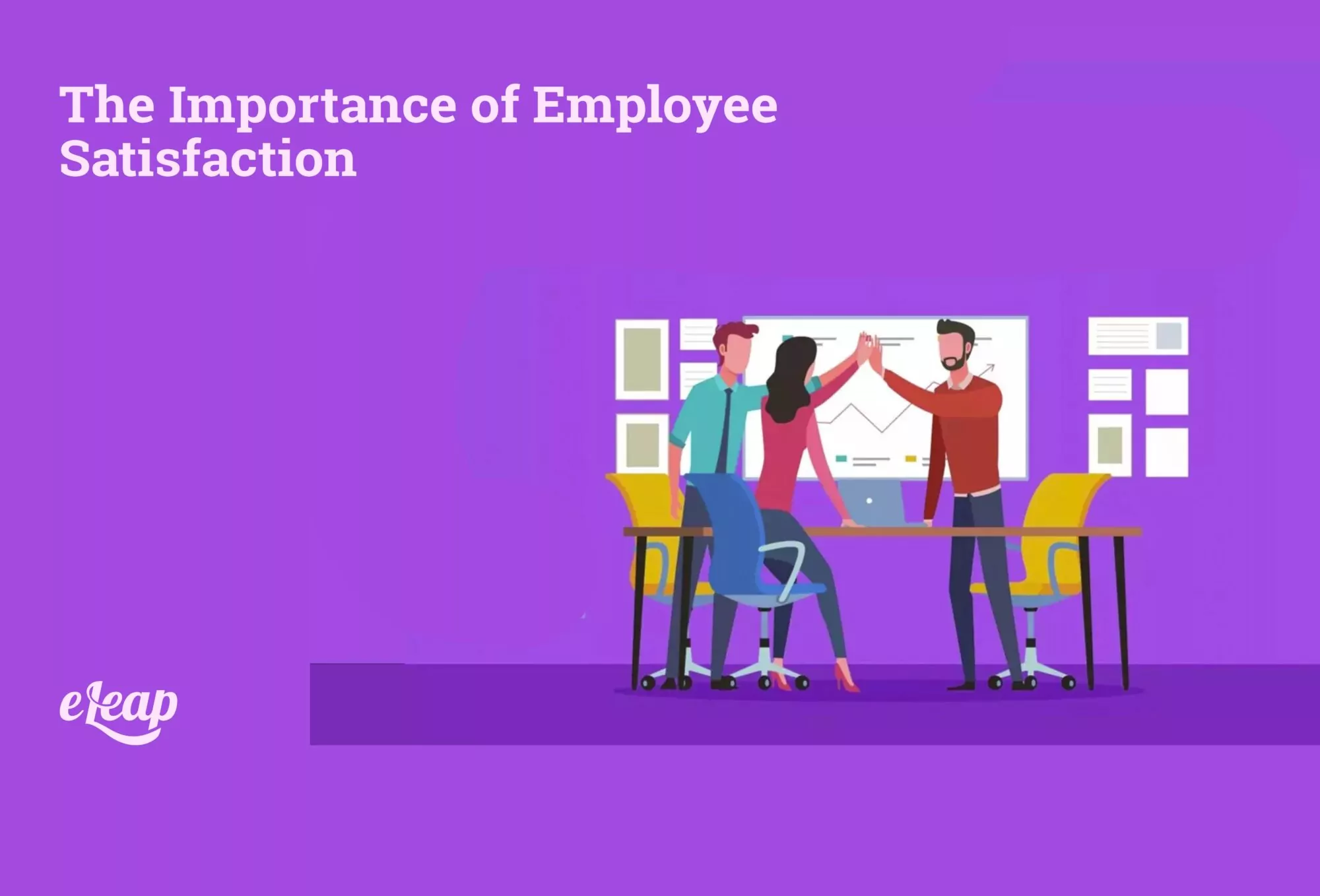The Importance of Employee Satisfaction

In today’s world, employees hold a great deal of power because companies are scrambling to find talented individuals to join their teams.
Large numbers of employees are resigning because they don’t feel that the company values them enough. Is it because they’re not satisfied with their salaries or don’t have enough opportunities for advancement?
The huge number of employees leaving is labeled “The Great Resignation.” This is what makes employee satisfaction so critical right now and why it should be an important element in your performance management process. Without satisfied employees, your business will never reach its full potential.

Fixing Employee Satisfaction
There are a number of ways you can go about managing employee satisfaction, but first things first: you need to know exactly what it is that drives employees to become dissatisfied with their place of work. If you don’t have your finger on the pulse of what’s causing satisfaction or dissatisfaction, then you can’t implement a strategy to remedy these challenges.
It helps to be aware of the most common issues that lead to employee dissatisfaction. This at least gives you a good place to start in identifying what’s causing team members to be so unhappy.
Identifying Reason for Dissatisfaction
Employee retention expert Michael Lowenstein suggests six primary reasons for this dissatisfaction:
- Short-term goals being prioritized above long-term ones.
- Poor planning on the part of management.
- Little opportunity for growth.
- Lack of career advancement opportunities.
- Employees feeling overworked or under-utilized.
- Poor compensation. These reasons can be boiled down to one thing: lack of respect.
Employees feel that they’re not being recognized for their contributions, and they’re not given the opportunity to help themselves, never mind rise through the ranks in their organization. Their “career” is just a job. Something they do every day to put food on the table and gas in their car so they can get from home to work and back again.
All of these elements can come together to form an extremely unhappy workforce. How do you identify what the issues are specifically?
Finding the Exact Reasons
You can call one-on-one meetings with employees that seem the most unsatisfied. If you have specific employees or leaders you have a high amount of trust in, you could call on them to give you the inside scoop. However, this can create an atmosphere of distrust.
The best course of action is to confront the problem head-on. Talk to employees and ask them in the most direct way, and don’t beat around the bush. You’ll be surprised at the level of honesty you encounter. If you don’t address the problem, you run the risk of things getting worse.
This attitude can spread quite rapidly and rub off on new team members.
It’s Vital for the Future
Another important reason why employee satisfaction is so vital is the picture it paints for new employees entering your organization. If they notice a large number of employees leaving because they’re not satisfied, this could leave a terrible taste in their mouths.
In many cases, it could cause them to quit. The truth is, your employees are your best brand ambassadors: they work for you and speak on your behalf every day. Don’t allow them to become dissatisfied because this might cause a ripple effect in your organization.
On the other side of that coin, having a workforce that’s satisfied and content with their work environment could lead to some significant benefits. They could actually end up recruiting and bringing more quality talent through the door. The following section highlights additional benefits of having satisfied employees.
Additional Benefits of Employee Satisfaction
The benefits of having satisfied employees are vast.
When your employees are content, they become more invested in their work. They take fewer sick days, and they’re more productive overall. They’re also less likely to leave your organization, so you don’t have to worry about constantly recruiting and training new employees.
Additionally, the Society for Human Resource Management study found that companies with highly engaged employees have 22% higher profits than those with low engagement scores.
Satisfied employees also tend to be more creative and innovative, which can lead to new products and services for your customers. They’re also more likely to go above and beyond their job duties in order to help the company succeed.
To experience these benefits, you need an engagement strategy to correct the issues. Once you’ve identified the exact cause of dissatisfaction using the tips we mentioned earlier, you can begin moving towards a solution.
Finding a Remedy
You can implement a mixture of the following strategies to find a solution for any employee dissatisfaction issues you’re having.
Recognition
The first is employee recognition. This could involve giving employees awards or just recognizing them for a job well done. Employee engagement is important, as it helps to keep employees satisfied with their work.
Highlight Retention
The first step is to actually start retaining employees. You need to be aware when they’re not satisfied and make a conscious effort to correct these issues. Make sure you listen to their grievances and do your best to resolve them.
Highlight these instances after you start noticing a decent number of employees putting in some longevity with your organization. Send out newsletters congratulating employees for one year with your company. You can do two years and three years, and so forth. This does wonders for your company culture.
Inclusion
Last but not least, make sure your employees feel like they’re part of a team. This could involve team-building activities or just having regular team meetings. When employees feel like they’re part of a team, they’re more likely to be satisfied with their job.
It may take some time and quite a bit of effort, but turning things around and having a pool of more satisfied employees is possible by using the tips mentioned above. Honestly, it doesn’t take rocket science to correct these problems.
A healthy combination of compassion, attention, and collaboration will have some incredible benefits for your organization. Your employees will pick up on these things, especially when you’re sincere. Make sure that you are sending the message that their success and well-being matter, but you have to take action and not just speak meaningless words. This will lead to the best results in the end and ultimately lead to long-term success.